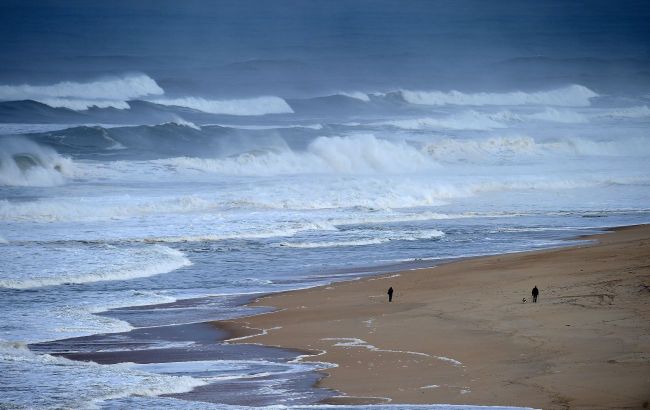How climate change could destroy Pacific islands
 Oceans affect the life of the entire planet (photo: Getty Images)
Oceans affect the life of the entire planet (photo: Getty Images)
Ongoing climate changes are having a profound impact on the islands of the Pacific Ocean. Scientists warn that continued global warming, driven by the burning of fossil fuels, threatens their very future.
What threatens the Pacific islands
According to the World Meteorological Organization’s (WMO) 2023 report on the state of the climate in the Southwest Pacific, the islands face a triple threat that jeopardizes their socio-economic development and even their very existence.
Experts highlight three key factors:
- Accelerating sea level rise, already surpassing the global average
- Ocean warming, a consequence of global warming and human activity
- Ocean acidification, as increased volumes of carbon dioxide (CO2) are absorbed by seawater, lowering the pH level
Since the 1980s, sea surface temperatures in the region have risen three times faster than the global average, leading to a significant increase in the frequency, intensity, and duration of marine heat waves.

Sea level change trend over 1993-2023 (infographic: wmo.int)
Why these islands are especially vulnerable
"A worldwide catastrophe is putting this Pacific paradise in peril. Global average sea levels are rising at an unprecedented rate. The ocean is overflowing," emphasized UN Secretary-General António Guterres, who joined in the release of the WMO report.
He added that the reasons for what is happening in the Pacific region are clear.
"Greenhouse gases – overwhelmingly generated by burning fossil fuels – are cooking our planet. And the sea is taking the heat – literally," Guterres explained.
The Secretary-General noted that Pacific islands are uniquely exposed for several reasons:
- Their average elevation is only one to two meters above sea level
- 90% of the population lives within 5 kilometers of the coast
- Half of the infrastructure is located within 500 meters of the water
At the same time, Guterres acknowledged that the issue is a global one.

Sea surface temperatures in the period 1982-2022 (infographic: wmo.int)
Expert opinions
Throughout 2023, the Pacific region witnessed 34 dangerous hydrometeorological events — most of them storms or floods — that resulted in over 200 deaths and affected more than 25 million people.
According to the UN Secretary-General, "Surging seas are coming for us all – together with the devastation of fishing, tourism, and the Blue Economy."
"Across the world, around a billion people live in coastal areas threatened by our swelling ocean. Yet even though some sea level rise is inevitable, its scale, pace, and impact are not. That depends on our decisions," Guterres added.
WMO Secretary-General Celeste Saulo added that climate change has become a global crisis and represents the defining challenge humanity now faces.
"Communities, economies, and ecosystems throughout the South-West Pacific region are significantly affected by its cascading impacts. It is increasingly evident that we are fast running out of time to turn the tide," she emphasized.
Saulo pointed out that the ocean has already absorbed over 90% of excess heat and continues to undergo changes that could become irreversible over the coming centuries.
"Human activities have weakened the capacity of the ocean to sustain and protect us and – through sea level rise – are transforming a lifelong friend into a growing threat. Already, we are seeing more coastal flooding, shoreline retreat, saltwater contamination of freshwater supplies, and displacement of communities," she added.
Sources: World Meteorological Organization (WMO), NASA.gov, Wikipedia.

